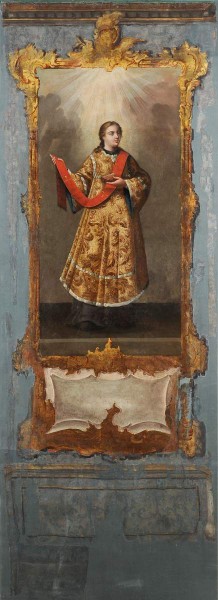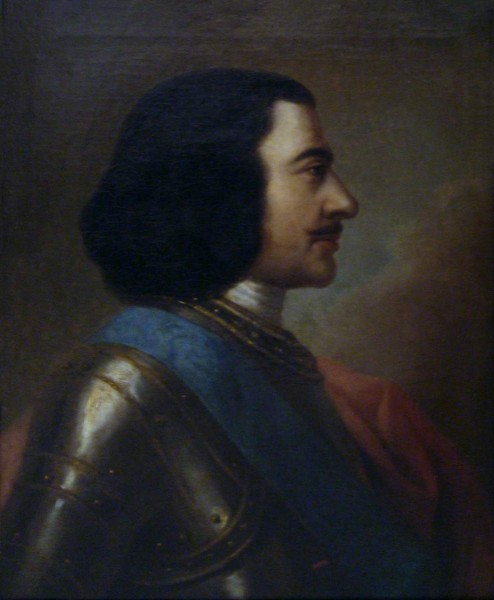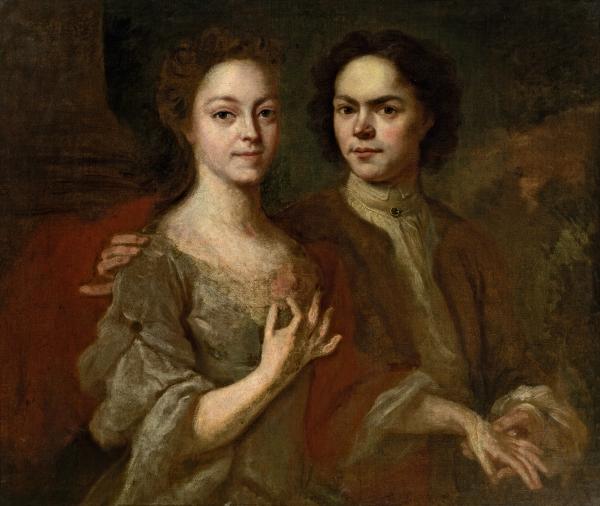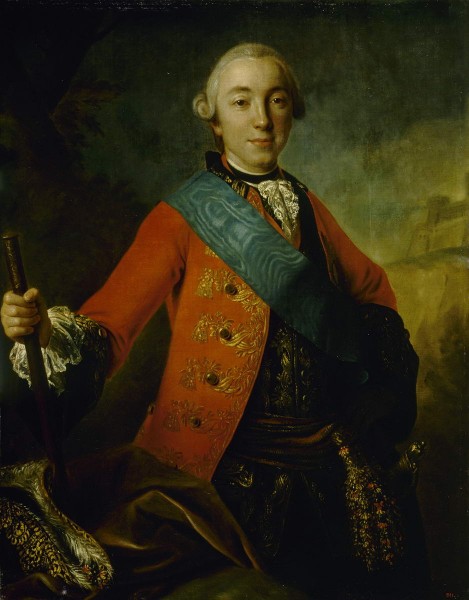The artist is unknown

+ About the restoration of the work
– Hide the text about restoration
The state of safety before restoration:
The Russian Museum stores two unique marching iconostasis of the Elizabethan time, written in oil paints with gilding on blue silk in the first half.. Despite the large size (height of more than two meters), the icons are easy to carry, t.to. Such iconostases were created for camp churches all 11 icons from two iconostases, came in the 30s from the ancient storage of the Alexander Nevsky Lavra. The images of the saints are written in reserves framed by the Rockyl, gilded ornaments from curls, cartouches and acanthus leaves. All the free space of icons is blue silk, light, with a well -noticeable texture and alternation of the brilliant and matte parts of the collar or a muar brilliance.
Both iconostases are similar in writing technique and the materials used, although their basis is slightly different. In the first case, it is a two -color kamka with a “injured” pattern, in the second – two -tone reps. Dye in both cases – cube indigo. As a rule, the soil of all icons with the use of lead white, gilding oil.
Four icons of the first iconostasis are in very poor condition. They are strongly reckoned and continue to collapse under the weight of the Podovtogic codes, records, duplicate materials. The second iconostasis, consisting of 7 icons, has been preserved better. The most vulnerable element of icons was open silk. He underwent natural destruction under the influence of mechanical influences, aggressive environment and pollution. Numerous losses, tears, dilapidated, sung surface of silk required immediate conservation. The painting of both iconostases was preserved in a satisfactory condition with the exception of sections with a damaged basis. They have the connection of a colorful layer with soil and the basis is very bad.
Complex of the events:
The work began with the most destroyed icon “St. Stefan”. It was necessary to develop a methodology for restoration of both oil painting and the basis of the base, to choose materials that give a good overall result.
Currently, work on the first icon of the iconostasis, “St. Stefan”, completed. The strengthening of a colorful layer and soil has been made. The icon is fully disclosed from the streams, including painting in reserves, gilding and open author’s silk. Silk around the perimeter is freed from grains, overloads and records, strengthened and duplicated on a layer of pre-tinted blue silk-aho-a that thickness using a polyester film. Gaps are glued. The central part of the icon is duplicated on an intermediate layer of Gampi paper, then a general duplication is performed on a dense, thin cotton fabric, previously tinted in blue. Duplication was carried out on a low pressure table in a cold way. After all work on picturesque restoration, the icon is fixed on the tablet subframe. The picturesque image in the center is varnished. Tinting the loss of a colorful layer with paints Maimeri Restauro.
Further conservation of icons of iconostasis continues.
Keeping a story. Restoration workshop of the Russian Museum – 100 years. SPb, 2022. With. 176.


